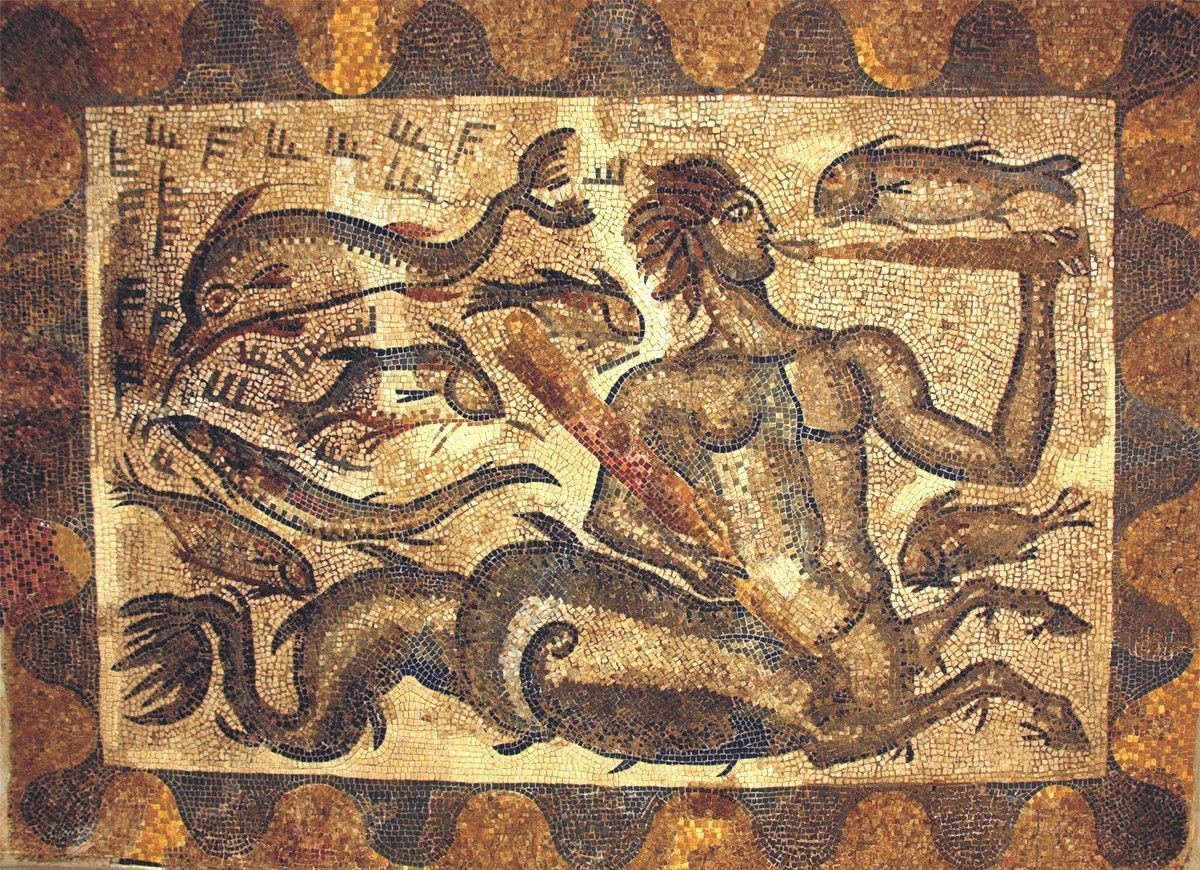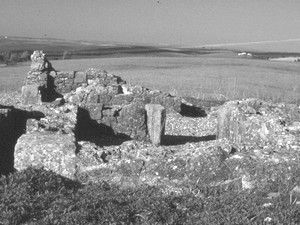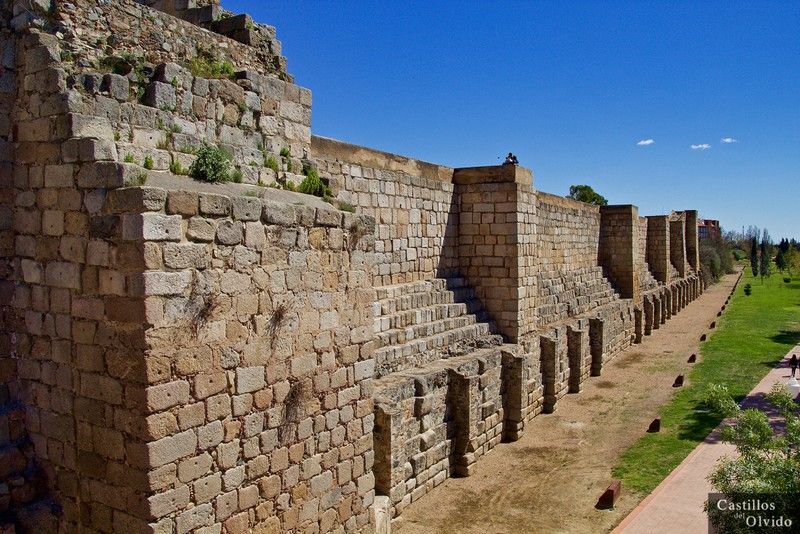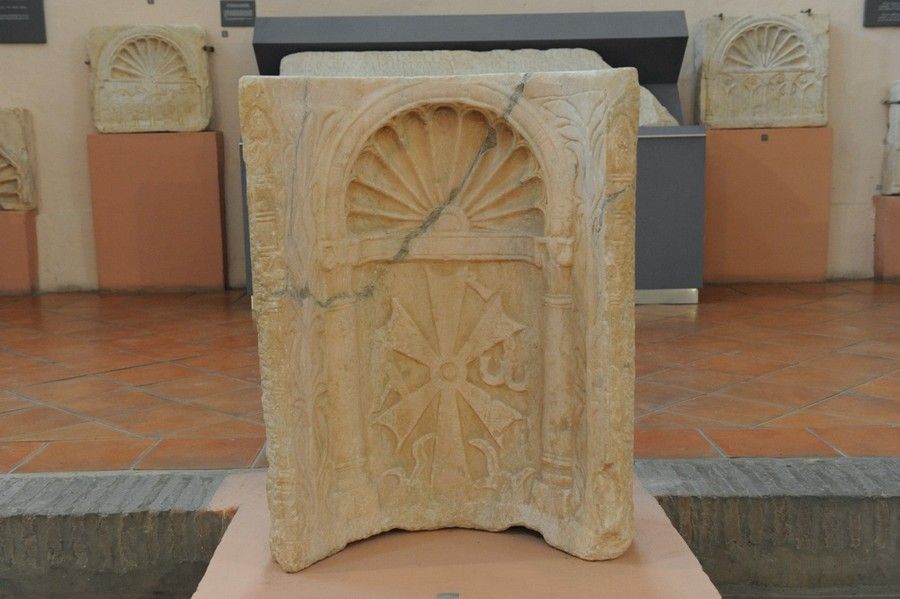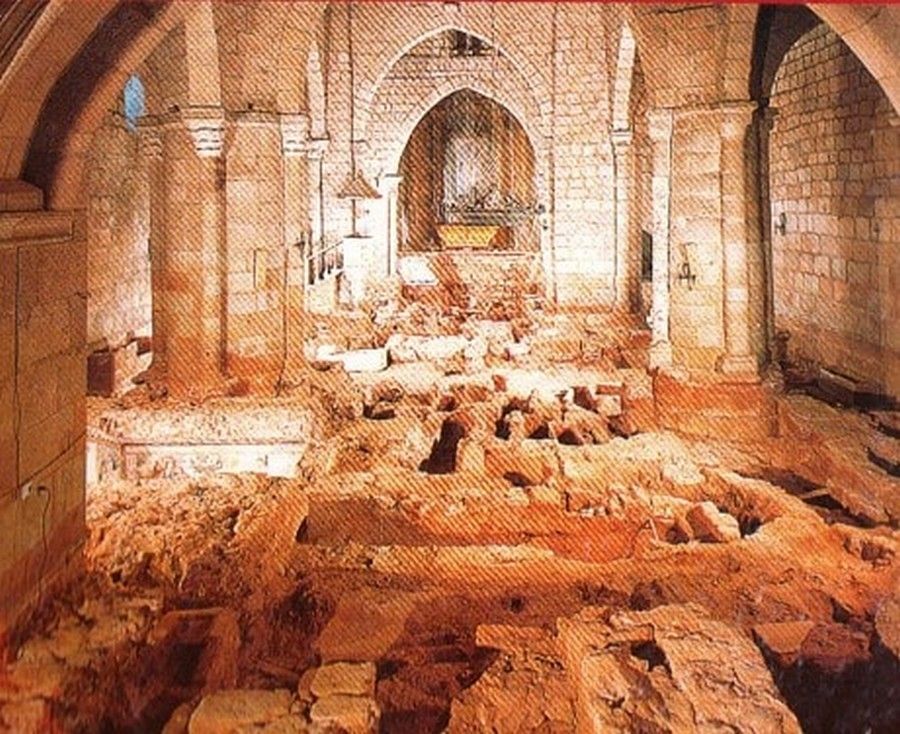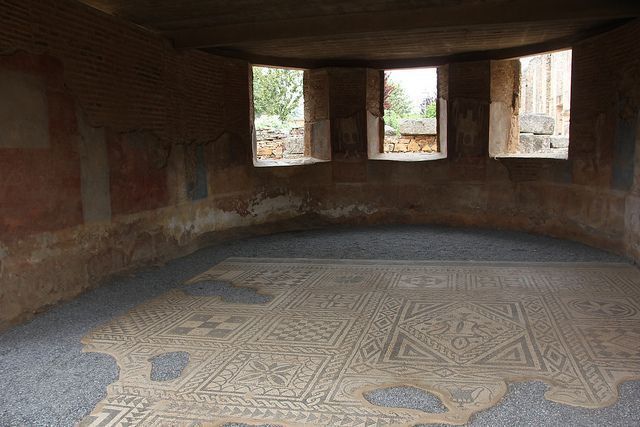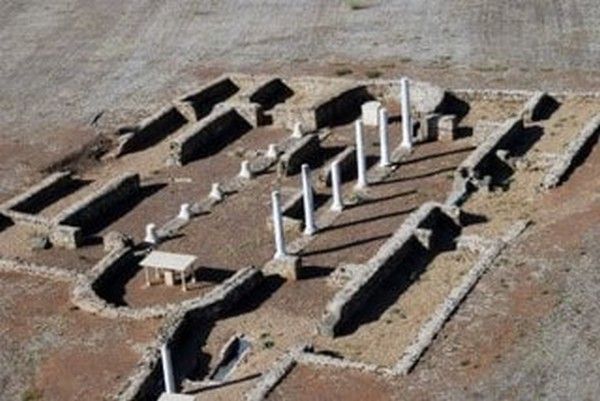ALCAZABA DE BADAJOZ
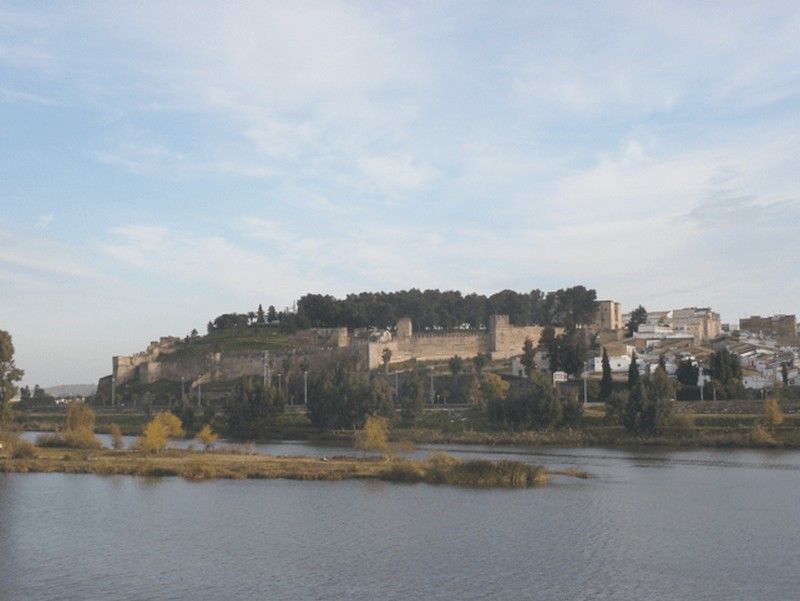
Historic environment
Badajoz is the capital of the homonymous province, being the most populated city in Extremadura. It is born on a limestone promontory called Cerro de la Muela or del Montuorio, which rises about 60 meters above the Guadiana plain (209 meters above sea level). The elevation, although modest, together with the natural defense that the Rivillas river and stream offer, gives the settlement a high strategic value, as evidenced by the interest shown since ancient times by the successive cultures established in the territory.
The origin of Badajoz is discussed, establishing three basic hypotheses: the existence of a previous Roman city; the occupation in Visigothic times with a village; and a completely ex novo Islamic foundation. It can be affirmed that the current Badajoz is heir to the Muslim foundation and not to the previous settlements, probably  abandoned some time ago, as the written sources seem to confirm, whose structural reality and entity would be far from to be urban, at least in terms of the formal concept.
abandoned some time ago, as the written sources seem to confirm, whose structural reality and entity would be far from to be urban, at least in terms of the formal concept.
The foundation of Badajoz is part of the complex socio-political panorama of the Hispanic 9th century, at which time the Cordovan emirate was being questioned by various local powers. Mérida was a focus of rebellion that repeatedly rose up against the central power. One of the main leaders was Ibn Marwan al-Yilliqi, a descendant of one of the main Hispano-Visigothic families who, in the end, would be the founder of Badajoz, where he would settle with all his supporters.
In little more than a century, Badajoz (Batalyaws) became one of the main peninsular cities, a fact that would lead to the decline of Mérida. The supremacy in the territory reached such a point that during the First Taifas Badajoz was the capital of the Aftasí kingdom.
After the Christian conquest, the city remained one of the main urban enclaves in the west of the peninsula, a position that was cemented, among other factors, in its border location, which generated constant exchanges, and in the vast and rich area with which it was gifted. However, after a first moment of strength, a notable demographic and economic decline conditioned by the wars with Portugal and the general crisis of the 14th century is documented.
Description
The Badajoz citadel is one of the most important preserved examples of Spanish-Muslim military architecture. Its construction began in the year 875, when the emir authorized Abd-al-Rahman Ibn Marwan al Yilliqi to settle in the place. Initially the dimensions of the site were smaller than those of the current citadel, the entire town would be in that space, protected by a walled enclosure of which very little has been preserved, due to the destruction suffered and the many renovations to which it was subjected between the 9th and 13th centuries, Islamic reforms from the 11th to the 12th century, and Christian reforms thereafter, throughout the Late Middle Ages (14th and 15th centuries) and during the Modern Age (16th to 19th centuries). It would not be until the Almohad period when the citadel of Badajoz reached its “definitive” image, which has survived to a large extent, although with some modifications, up to the present day. The Almohads endowed it with the most advanced military elements of their time to form an imposing fortress: the wall, made with a concrete wall on a masonry plinth, was marked out by numerous towers, some attached and others albarranas, such as the superb Espantaperros, corachas that from the citadel went down to the Guadiana to defend the water supply, and a powerful rampart. Interesting are the three preserved gates, called “postigo de la Coracha”, “del Alpéndiz”, “del Capitel”, the last two magnificent examples of bend accesses defended by towers.
 The military enclosures of Islamic times defended the Christian city throughout the Late Middle Ages, and even beyond in time. Throughout the Late Middle Ages, the citadel became the fundamental inhabited nucleus, the old Islamic military compound in its entirety was a settlement space for the inhabitants of the town. Practically all of the medieval architecture and town planning disappeared as a result of the disasters that occurred during the War of Independence.
The military enclosures of Islamic times defended the Christian city throughout the Late Middle Ages, and even beyond in time. Throughout the Late Middle Ages, the citadel became the fundamental inhabited nucleus, the old Islamic military compound in its entirety was a settlement space for the inhabitants of the town. Practically all of the medieval architecture and town planning disappeared as a result of the disasters that occurred during the War of Independence.
The period of stability and elimination of the Spanish-Portuguese border in the 16th century meant that the defenses did not pay attention, since there was no longer a brand to protect, and this, over time, would entail great misfortunes for the town, since the dissolution of the kingdom again in two states would generate a conflict before which Badajoz offered itself literally defenseless; This fact led to Badajoz being damaged to extremes hardly imaginable, until reaching almost its total destruction.
The conflict with Portugal revealed the urgent need for a new defensive system in keeping with the new times. Once the Restoration War was over, the state had the means to erect it, and it was already fully built at the end of the 17th century: a new wall and bastions would now be erected in defense of the population and the kingdom.
Victor Gibello for URBS REGIA
Other interesting information
General public visits.
Hours: public space, open to visits without restrictions.
Bibliography
– GONZÁLEZ RODRÍGUEZ, A.: Historia de Badajoz, Badajoz, 1999.
– CRUZ VILLALÓN, Mª.: Badajoz, ciudad amurallada, Badajoz, 1999.
ID.: “Badajoz visigodo, Badajoz mozárabe”, Anas, 7-8 (1994-1995), 327-342.
ID.: “Los antecedentes visigodos de la alcazaba de Badajoz”, Norba, 2 (1981).
TERRÓN ALBARRÁN, M.: El solar de los Aftásidas. Aportación temática al estudio del reino moro de Badajoz, siglo XI, Badajoz, 1971.
ID.: Extremadura musulmana. Badajoz 713-1248, Badajoz, 1991
Portals










